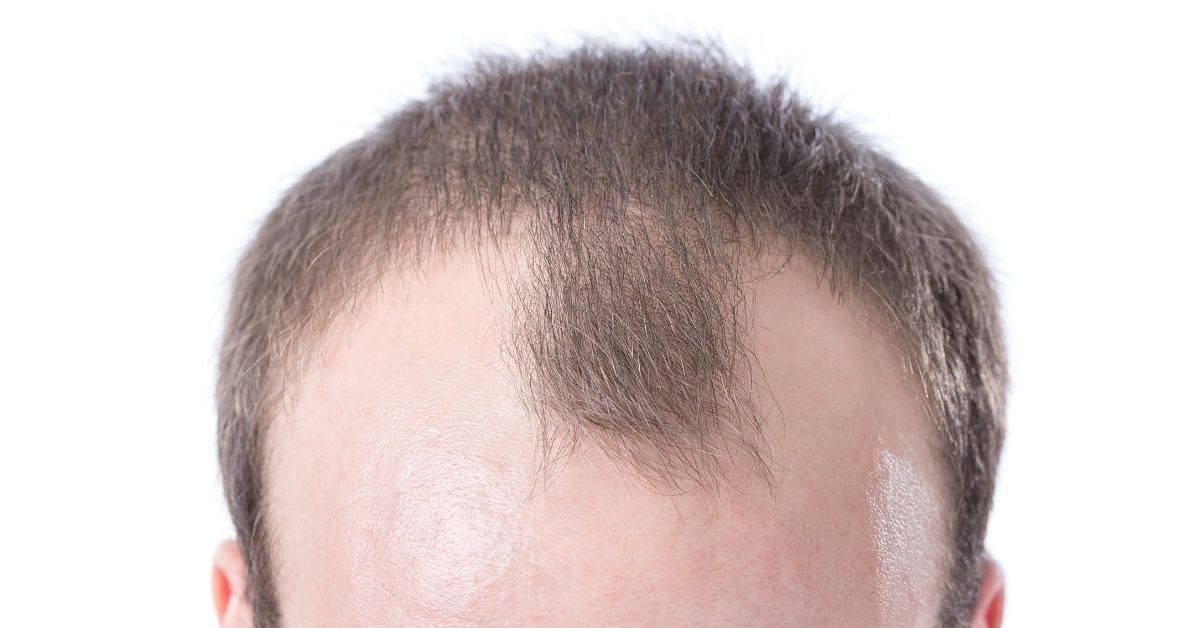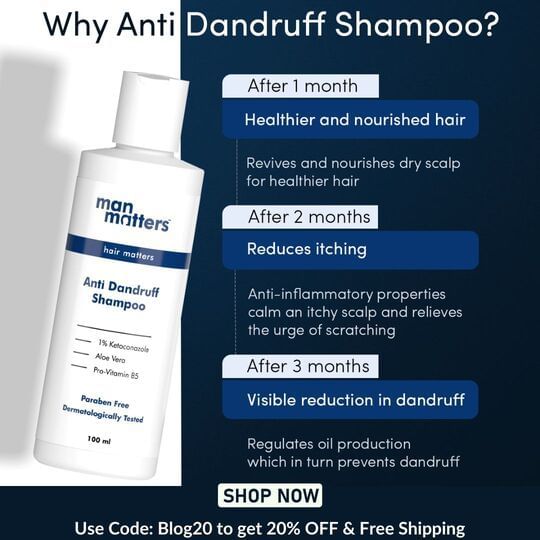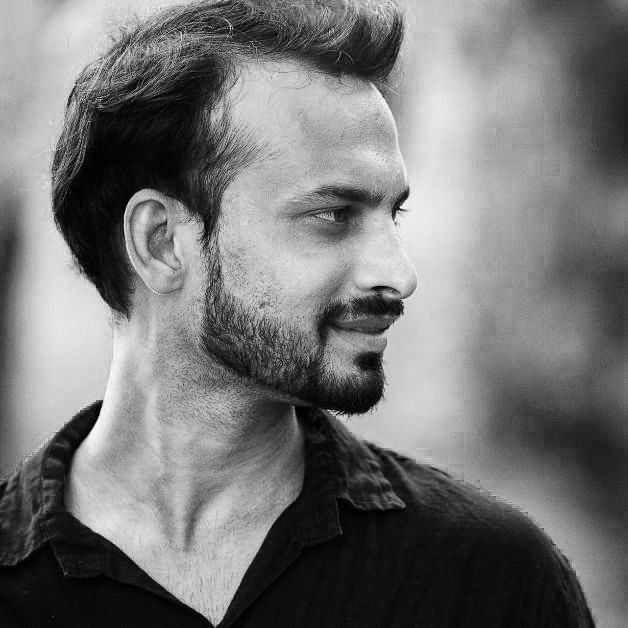How to Stop Receding Hairline? 9 Science Backed Tips to Follow!
Dealing with bald spots and worried about receding hairline? keep scrolling to learn how to stop receding hairline by following these easy methods!

It's natural for our hairlines to rise slightly higher above the brow as we age. Men may experience this in their late teens or early twenties.
Once the hairline recession has begun, it is difficult to reverse. Many people experience hair loss due to a combination of genetics and ageing.
If you're experiencing hair loss, you should know that many therapies, treatments, and at-home remedies are available to help you keep your hair healthy and full.
Receding Hairline Treatment
1. Medications
Minoxidil is the most commonly used over-the-counter (OTC) medication for a receding hairline (Rogaine).
According to studies, topical minoxidil works better than a placebo. Furthermore, a 2015 study discovered that it causes new hair growth in 40 per cent of people who use it. ManMatters 5% topical solution also contains minoxidil as an active ingredient.
Finasteride (Propecia) is a prescription medication that reduces the levels of hormones that cause your hairline to recede. Finasteride has been shown to promote scalp hair growth and stop hair loss when taken orally.

2. Hair Transplant
A hair transplant is a surgical procedure in which a doctor moves hair from the back of your head to the front at your hairline. These implanted hair sections can make your hairline appear fuller.
There are risks associated with a hair transplant, and this procedure isn’t covered by health insurance. Speak with your doctor to find out if you’re a good candidate for a hair transplant.
3. PRP Therapy
Another option is PRP (platelet-rich plasma) therapy. A small amount of blood is drawn from your arms and spun into a centrifuge machine to separate out the platelet-rich plasma. The plasma is then injected into the scalp area, which requires growth. The end result is that the hair follicle is rejuvenated and repaired, stimulating new growth.
4. Low-level Light Therapy
Low-level light therapy uses lasers to stimulate hair growth on your scalp. According to a 2015 study, it is effective for both men and women who are experiencing hair loss.
According to the researchers, the light sends a signal to your cells, causing hair follicles to enter the anagen (growth) phase.

5. Essential Oils
Some essential oils have been shown to promote hair growth. Rosemary oil, peppermint oil, and lavender oil have all been discovered to be effective treatments for receding hairlines.
Before applying essential oils to the scalp, they should always be mixed with a carrier oil, such as almond oil, coconut oil, or jojoba oil.
6. Scalp Massage
According to a 2016 study, regular scalp massage may help you grow thicker, healthier hair.
Scalp massage may stimulate hair follicles by increasing blood circulation at the site of your hairline. Every day, massage your scalp for at least 4 minutes.
7. Switch to a Gentle Shampoo
Some shampoos are specially formulated to be gentle on your hair while also stimulating the hair follicles. While some shampoos contain chemicals that strip sebum (oil) from your scalp and can be harsher on your hair, others may aid in hair growth.
Ketoconazole is the active ingredient in these shampoos. According to 2020 research, it can promote hair growth in many cases.

8. Lower Your Stress and Anxiety
Stress has been linked to certain kinds of hair loss. It may appear that reducing stress and anxiety is easier said than done.
According to research, regular exercise, time outside, relaxation techniques, and meditation can help you reduce your stress levels.
9. Lower DHT Levels
Dihydrotestosterone (DHT) is a hormone that your body produces. Hair loss may worsen as DHT levels rise.
DHT levels in the body can be reduced by including certain foods in your diet. Green tea (and its epigallocatechin gallate content), turmeric (particularly it's compound curcumin), and soy (edamame), for example, may help you lower DHT.
What Causes a Receding Hairline?
A receding hairline is commonly associated with ageing and hereditary factors.
Other factors can aggravate hair loss and contribute to a receding hairline. These elements include:
- Hair over styling (especially with heat)
- Choosing tight hairstyles such as cornrows and braids
- Hair colouring with chemicals such as bleach and peroxide
- Consuming a diet high in saturated fat, processed foods, preservatives, and sugar
- Inhaling tobacco
- Conditions such as lupus or frontal fibrosing alopecia that cause inflammation of the scalp

When to Talk With a Doctor
Keep in mind that some hair shedding is normal. Hair loss in large quantities is not.
Consult your primary care physician or dermatologist if you are experiencing mass hair loss, bald spots, patchiness, or other unusual hair loss symptoms. Hair loss can indicate an underlying health problem.
Summing Up
There’s no one proven way to stop your hairline from receding once it’s started. However, there are many more options than there used to be for making your hair more resistant to falling out.
Some over-the-counter hair loss treatments and home remedies may be beneficial, but you should always consult a dermatologist or your primary care physician first.
It's important to note that different hair loss treatment strategies will work for different people, so consult with a doctor to find the best one for you.
FAQs
Can a Receding Hairline Grow Back?
Yes, a receding hairline can often grow back with the right treatment plan. This includes clinically proven hair loss treatments, natural remedies, or a combination of both.
Does a Receding Hairline Always Mean Baldness?
While a receding hairline is a sign of male pattern baldness, it’s natural for your hairline to change as you age. It doesn’t always mean baldness, and there are many treatment options available to stop the hairline from progressing further.
References
Andy Goren, January 2015; Clinical utility and validity of minoxidil response testing in androgenetic alopecia - https://pubmed.ncbi.nlm.nih.gov/25112173/
Barbara L Dillingham, March 2005; Soy protein isolates of varying isoflavone content exert minor effects on serum reproductive hormones in healthy young men - https://pubmed.ncbi.nlm.nih.gov/15735098/
Pinar Avci, August 2013; Low-level laser (light) therapy (LLLT) for treatment of hair loss - https://onlinelibrary.wiley.com/doi/10.1002/lsm.22170
K J McClellan, January 1999; Finasteride: a review of its use in male pattern hair loss - https://pubmed.ncbi.nlm.nih.gov/9951956/
Oh, Ji Young, Peppermint Oil Promotes Hair Growth without Toxic Signs - https://koreascience.kr/article/JAKO201402755363070.page
Gregory L. Stonerock, August 2015; Exercise as Treatment for Anxiety: Systematic Review and Analysis - https://academic.oup.com/abm/article/49/4/542/4562693

